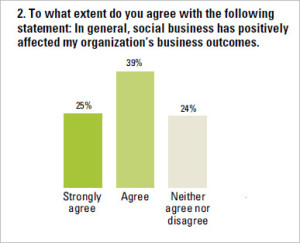If you’re finding yourself searching for a “gym” more than you used to…you might be addicted to Pokemon Go. And you’re not alone. The resurgence of this popular ’90s TV show in the form of a mobile game has garnered a $ 7.5 billion market value to game maker Nintendo.
Businesses nationwide are cashing in on the craze, luring players (read: potential customers) into the shops by paying a small amount of money to have characters placed in the location. One player close to our West Chester headquarters reported seeing a swarm of people near a popular yogurt shop…better known as a Pokestop for the night.
Transforming the Virtual to Reality
A more realistic and feasible way to implement this idea of gaming into your small business is through gamification. This trend is typically used for employee training development. Gamification is defined as the process of applying gaming concepts to learning or training scenarios to make them more engaging and entertaining for the learner.
Learning Can Be Fun
What better way to teach your employees and get them excited over new material than implementing a game?
Whenever you can inject fun into training, it helps the learning stick. Unless the learners are brand new and know nothing about how to do their jobs, the enthusiasm level tends to be lower when people are told they have to attend training.
But if the learner has a problem to solve, a contest to win or a game to play, they can learn or review topics while enjoying themselves. If it is perceived as entertainment, the enthusiasm and willingness to participate naturally increases.
How to Implement
- Safety training – Make a game out of finding all of the things that could be hazardous (scavenger hunt style). Make either a live scenario (spilled coffee on floor, mat flipped up, ‘frayed’ extension cord, piles of boxes obstructing view) or set up a scene and take a picture for them to find the pieces.
- Contests and leaderboards – This is especially popular for a sales organization. Set up contests to see who gets from X to Y in sales, etc. This is for progress made in sales, targeted completed numbers for production, etc. Employees have the ability to check their progress against others (and some do better to check themselves against their own previous month or week).
- Wheel of Fortune – In our new hire training class, PrimePay uses a wheel like the one in Wheel of Fortune. Each section is a review topic or a spin again backwards, lose a turn, etc. Our manager of service training, Shannon Peffer, pre-creates review questions for each topic area. They play in teams and each individual on the team gets a turn to spin and answer a question. The winning team gets bragging rights of course
- The wheel can also be used to spin for prizes once certain achievements are met. Prizes can be promotional items with a business logo (that builds pride in the company) a longer lunch break, two hours of paid time off, a gift card, etc. Just make sure these prizes are approved by the business owner or decision maker (if that’s not you).
- Software – There’s a free software program where individuals answer multiple choice questions either on their phone or through a website and can compete against other teams.
There are lots of fun software programs out there, some of which are free or inexpensive. Find out what works for you and your budget to find the best possible way to capitalize and make learning fun.
*Important to note that prizes above $ 25 are considered taxable compensation and should be reported through payroll as non-cash compensation.
It’s Not For Everyone
Depending on how gamification is used and what your team is like in the first place, you have to be a little careful and get creative with your methods. Some people do not like to compete against others at all and that perceived pressure can have the opposite effect.
If the game, contest or challenge is very peppy and you have a solemn, matter-of-fact, serious team, the attempt could fall flat. How much does the individual need to “put themselves out there?” If the individuals do not feel safe to participate without ridicule, they will resent being forced to participate and you could have an HR issue on your hands. The intended learning will not take place.
Know your team, know their interests…then use this information to your benefit. Make it fun, but safe. Above all, the game must be tied to the content you wish the employees to learn, otherwise, it is just a game…and your employees will soon be jumping for joy when they catch a Mewtwo instead.
Business & Finance Articles on Business 2 Community(55)
Report Post









